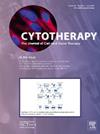推进基因编辑平台,提高罕见疾病治疗的可行性:来自2024年由ARM、ISCT和Danaher主办的科学交流的关键见解。
IF 3.2
3区 医学
Q2 BIOTECHNOLOGY & APPLIED MICROBIOLOGY
引用次数: 0
摘要
由于患者人数少,药物开发和监管框架没有针对迅速进展或迅速致命的疾病,罕见病治疗面临可行性挑战。由于大多数罕见病本质上是遗传性的,基因编辑模式提供了巨大的希望。此次科学交流由再生医学联盟、国际细胞与基因治疗学会和丹纳赫公司于2024年11月共同主办,旨在通过推进利用稳定和可重复使用的过程或组件开发多种疗法的平台,解决实现基因编辑对罕见疾病治疗的全部承诺的挑战。通过多方利益相关者的参与和对CRISPR/Cas核酸酶、碱基和初始编辑案例研究的讨论,出现了4个关键机会,通过保持平台要素不变和/或简化开发步骤来实现价值:(1)一致的交付工具;(2)一致性制造;(3)效益与风险相适应的质量要求;(4)广泛的临床试验设计。总之,这些机会可以产生高达5倍的效率提高,并为患者、监管机构和开发人员创造可观的价值,有可能将给患者注射新的基因编辑疗法所需的时间从几年缩短到6个月。本文章由计算机程序翻译,如有差异,请以英文原文为准。
Advancing gene-editing platforms to improve the viability of rare-disease therapeutics: key insights from a 2024 Scientific Exchange hosted by ARM, ISCT, and Danaher
Rare-disease therapeutics face viability challenges due to small patient populations and drug-development and regulatory frameworks that were not developed to address rapidly progressive or quickly fatal conditions. Because the majority of rare diseases are genetic in nature, gene-editing modalities offer substantial promise. This Scientific Exchange, co-hosted by the Alliance for Regenerative Medicine, the International Society for Cell and Gene Therapy, and Danaher Corporation in November 2024, set out to address the challenge of realizing the full promise of gene editing for rare-disease therapies by advancing platforms that leverage stable and reusable processes or components to develop multiple therapies. Through multi-stakeholder engagement and discussions of case studies in CRISPR/Cas nuclease, base, and prime editing, 4 key opportunities emerged that deliver value by holding platform elements constant and/or streamlining development steps: (1) consistent delivery vehicle; (2) consistent manufacturing; (3) benefit-risk appropriate quality requirements; and (4) expansive clinical trial designs. Together, these opportunities could yield up to 5-fold efficiency gains and result in substantial value creation for patients, regulators, and developers, potentially decreasing the time required to dose patients with a new gene-editing therapy from years down to 6 months.
求助全文
通过发布文献求助,成功后即可免费获取论文全文。
去求助
来源期刊

Cytotherapy
医学-生物工程与应用微生物
CiteScore
6.30
自引率
4.40%
发文量
683
审稿时长
49 days
期刊介绍:
The journal brings readers the latest developments in the fast moving field of cellular therapy in man. This includes cell therapy for cancer, immune disorders, inherited diseases, tissue repair and regenerative medicine. The journal covers the science, translational development and treatment with variety of cell types including hematopoietic stem cells, immune cells (dendritic cells, NK, cells, T cells, antigen presenting cells) mesenchymal stromal cells, adipose cells, nerve, muscle, vascular and endothelial cells, and induced pluripotential stem cells. We also welcome manuscripts on subcellular derivatives such as exosomes. A specific focus is on translational research that brings cell therapy to the clinic. Cytotherapy publishes original papers, reviews, position papers editorials, commentaries and letters to the editor. We welcome "Protocols in Cytotherapy" bringing standard operating procedure for production specific cell types for clinical use within the reach of the readership.
 求助内容:
求助内容: 应助结果提醒方式:
应助结果提醒方式:


